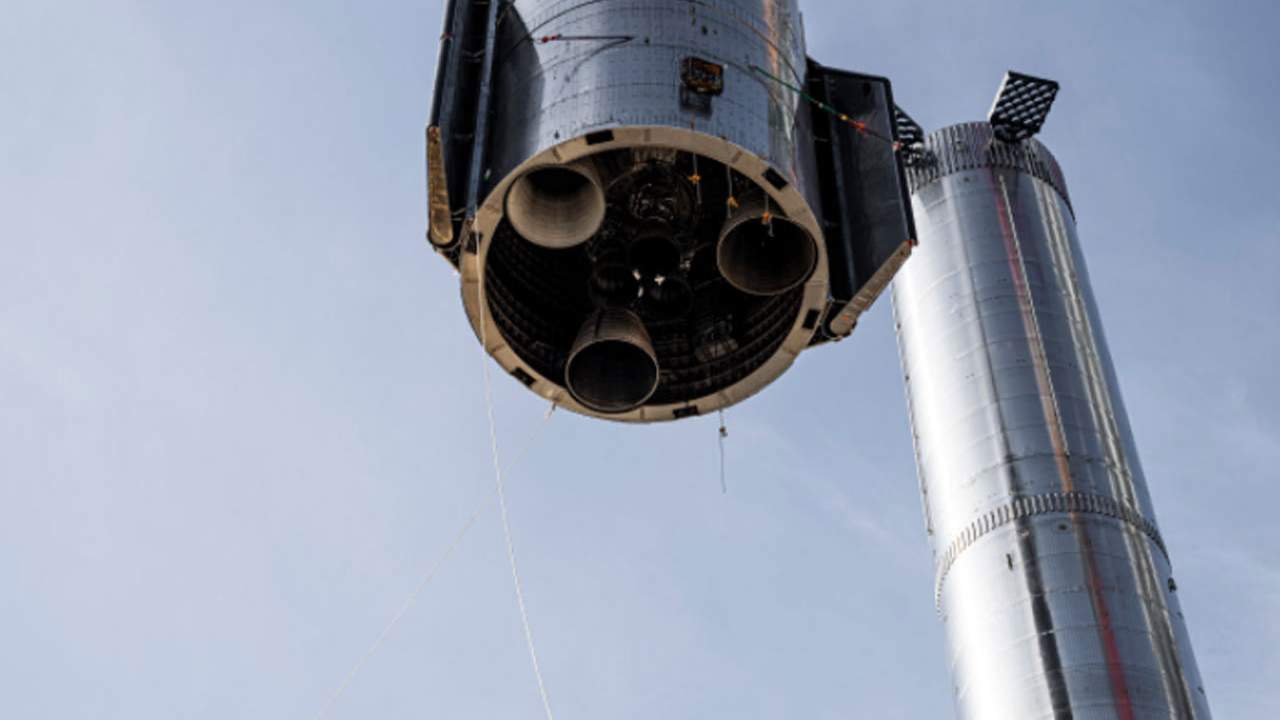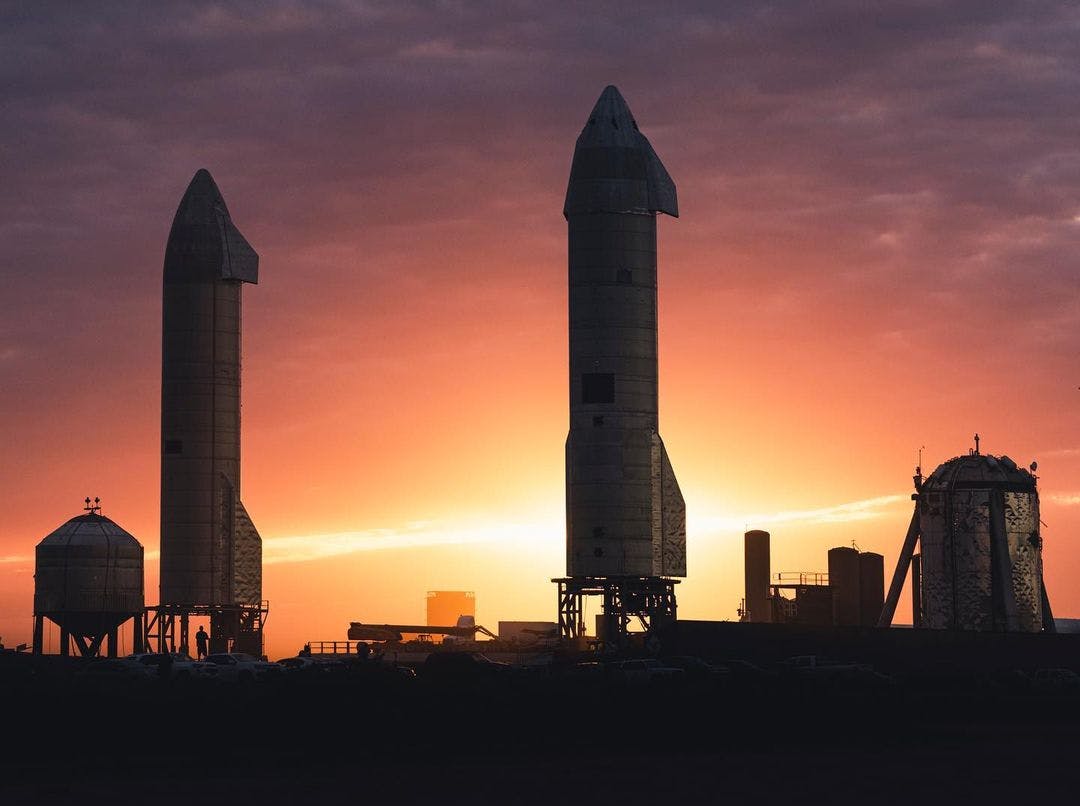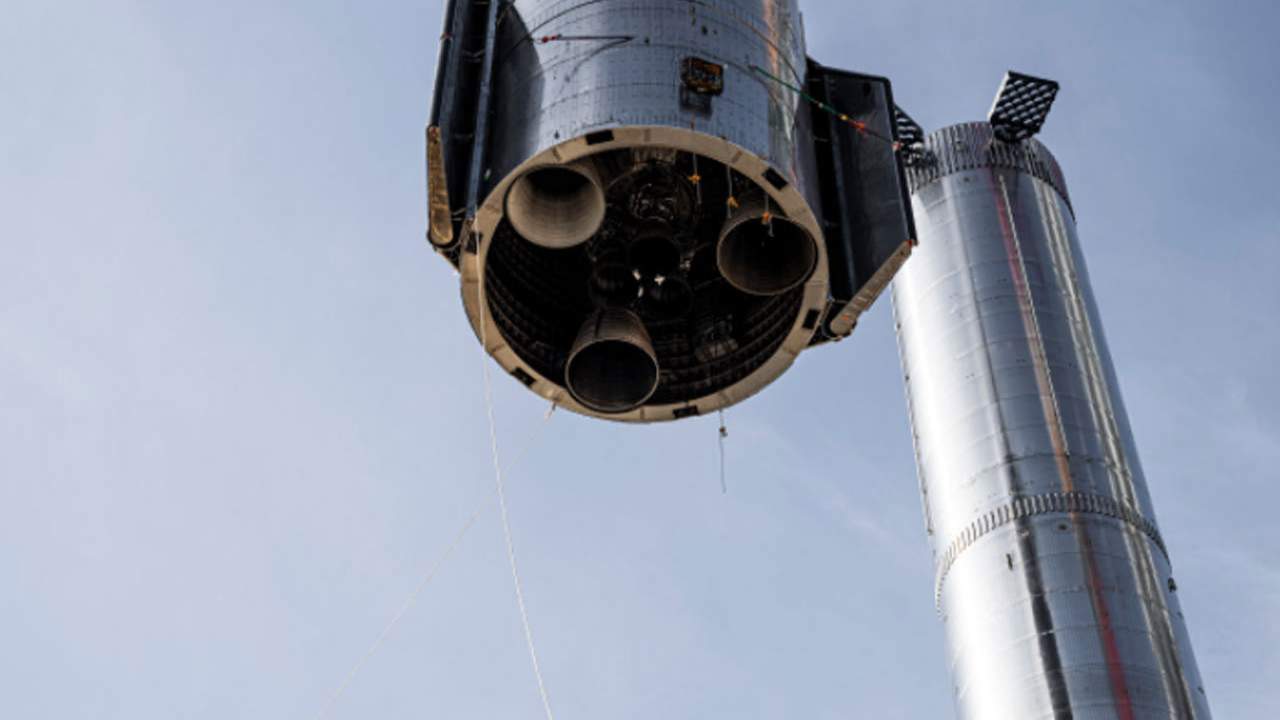
Can SpaceX Build 100 Starships A Year?
If SpaceX and Elon want to not only get to mars but set up a colony they are going to need to make a lot of trips. While Starship is planned to be one of the most powerful and biggest rockets ever it still can’t bring the necessary supplies in a single trip. Specifically, Elon has mentioned that the future goal is to build 100 Starships in just one year. However, is it even possible to produce that many Starships in such a short period of time?
It would be an extreme challenge but it’s possible for SpaceX to build 100 Starships in a year. The company is already getting faster and faster at producing Starship prototypes. Starships design, main build materials, the addition of robots, and a large production site expansion could make the goal of producing 100 Starships a year possible.
Elon has talked about needing the capability to bring megatons into orbit each year to make life multi-planetary. Building 100 Starships each year would produce 1000 at the end of a decade. Currently, in Boca Chica, SpaceX has continued to rapidly innovate and produce Starship prototypes for the intense testing campaign. Although they will have to master the process if they want to achieve this goal.
Why 100 Starships Per Year?

One of the biggest challenges with Mars is the distance from Earth. At over 200 million miles away the trip on average takes around half a year just to arrive. This means if you need to bring a large amount of cargo it’s not time-efficient to make a lot of trips. This would end up taking hundreds of years as one round trip would take over a year by itself. When building a colony on a different planet you need a lot of supplies. This includes a large list of items like life support, food, water, materials, and other necessities. While the goal is to create a colony that is self-sustaining, that is not possible right away. Until the colony can support itself you need to bring the necessities with you.
Many of the trips would also be dedicated to just bringing the humans themselves. Finally, you would need to bring supplies to create a production plant capable of turning the natural resources into liquid methane and oxygen for propellant. All of these reasons are why a lot of Starships are necessary when attempting to colonize Mars. More specifically Musk has estimated before that they will need around 1000 Starships in total. These Starships would launch about 3 per day and end up bringing almost 1000 megatons into orbit each year.
How Would SpaceX Do It?
Starship Design – While still very complex, Starship has a much simpler design than a lot of other rockets. What I mean by this is the production process and the simplified features throughout the rocket. One of the biggest factors is the ring segment assembly. SpaceX often receives large rolls of stainless steel. In big production tents, they cut and weld the stainless steel into large ring segments. Finally, they add reinforcing to some of the segments and then stack. This process is quite fast and they are continuing to improve on it. Other important features like the heat shield are built for quick and simple installation or replacement. Almost all the tiles are uniform and easy to install. If the company wanted to ramp up its production to 100 Starships a year, the simplified design aspects all around Starship would help significantly.
Build Materials – With the entire rocket coming in at 120m tall and 9m wide it requires a lot of materials. So many materials that you need to consider them when talking about the possibility of creating 100 per year. As I mentioned before Starship is almost entirely made out of 304L stainless steel. This steel is heavy but has a long list of benefits. One of the benefits that apply to production capability is the availability of the material. 100 Starships would require thousands of tons of steel. However, thanks to SpaceX choosing such a popular and common material, they could most likely get their hands on the necessary steel when building a large number of Starships. This comes in stark contrast to a lot of other rocket companies that use highly machined carbon composites for their rockets.
Robots – Another aspect that helps SpaceX’s case is the addition of robots. When looking at an efficient production line of a car you will see an almost entirely automated process. Here many different robots work together in a symphony, each with a specific task. This speeds up the production and assembly process by a long shot. SpaceX is already working with different robots today. In early Starship development, the robots have been tested with welding and installing heat shield tiles on prototypes. If the company is already testing the use of robots we can guess that they are interested in using them a lot more in the future. If SpaceX can get ahold of more robots and get them working properly it would make 100 Starships a year a lot more realistic.
Production Site – One final benefit SpaceX is already working with is the large production site in Boca Chica. Almost every part of Starship is manufactured and assembled in the same place. This helps reduce complications and speed up the production process. However, the current production site is not capable of 100 Starships in a single year. The company would either have to expand Starbase significantly or build additional Starship production sites nearby. It’s also important to consider how much space a finished Starship takes up. Once finished you would need a good place to keep the 120m tall launch vehicle safe through different weather conditions.
Current Starship Development Speeds

SpaceX is continuing to improve in Starship development speed. Towards the beginning with prototypes like SN5, the company was just getting started at building sections of a Starship. They are now consistently building the entire Starship. This includes the Super Heavy booster and the Starship upper stage. Starbase currently has a lot of infrastructure in place to facilitate a fast Starship production. At first, SpaceX only had a few production tents and the small or mid-bay. Now Starbase has evolved and has many large production tents, a massive high-bay, and are working on an even larger wide-bay. All of these have helped them store and produce Starships faster.
One of the ways SpaceX has been doing this is by working on multiple Starships at the same time. A prototype will be almost finished or already done and SpaceX will be almost complete with the next version. You can see this today with SpaceX’s current prototypes. SN20 and BN4 are both getting ready for the first orbital test flight. While they have not even been tested yet the company has already started work on multiple future prototypes including SN21 and BN5. This continued work ahead of schedule is helpful now and will be necessary if they want to build 100 Starships in a single year.
Conclusion
Building 100 Starships per year is an extremely ambitious goal by SpaceX and Elon. They want to build so many to colonize the red planet. With each trip taking around half a year you need to send hundreds of Starships to create a self-sustaining colony. However, Starship’s design, build materials, the addition of robots, and production site expansion could make the goal possible. The company has already shown how fast they can produce prototypes and are continuing to improve. As time goes on we will have to wait and see what SpaceX and Elon are capable of.
